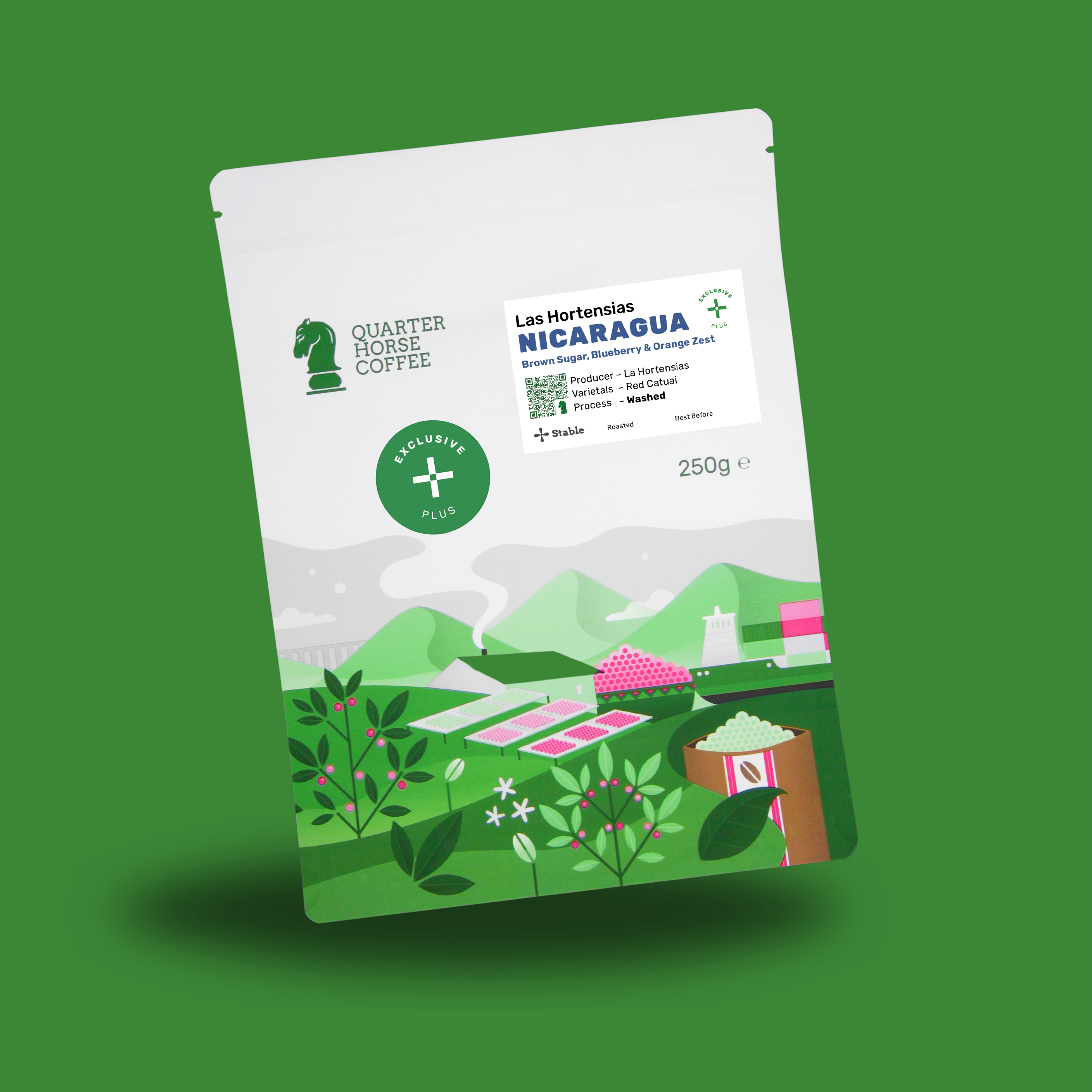Quarter Horse Coffee Club
Exclusive coffees for ✛ Plus plan subscribers

Coffee Profile

Varietals
Red Catuai

Process
Washed

Producer
Las Hortensias

Notes
Brown Sugar, Blueberry & Orange Zest
More about the coffee, producer & region.
Cafetos de Segovia, established in 2015 by sisters Ana and Martha Albir Sotomayor, represents the third generation of a family deeply rooted in the coffee farming in Nicaragua. Their mission was to process and export high-guality coffee from their farms and other local estates. Today, the cooperative boasts over 40 seasonal workers, including 19 women from the Mozonte region, and employs eight permanent members.
About the Region
The Hortensias lot is cultivated at altitudes between 1200 and 1300 meters on a 1.5 hectare plot. The farm uses eco-friendly practices, providing shade with forest species, fruit trees, and bananas. Regular pruning and shade management improve plant health, and only ripe cherries are manually harvested.
About the Process
Only ripe cherries are manually harvested, after which they are floated and depulped, then fermented for 18 to 24 hours before being washed with clean water. The coffee is transported in plastic bags and macen sacks to the processing facility, ensuring cleanliness throughout the journey. At the dry mill, the coffee is dried on African beds under covered structures (micro-tunnels). Once dried, the coffee is stored separately in designated areas within the warehouse, always in new plastic bags and macen sacks. The coffee is then rested for about a month, hulled, classified, and packed in the jute sacks and Ecotact bags for Ecotact bags bags for export, adhering to ICO standards.
How can I get this coffee?
Available exclusively in February on our ✛ Plus QHC Club Membership
Join our QHC Club today...








